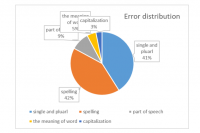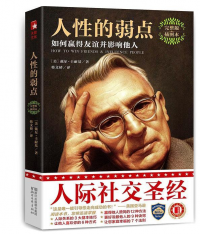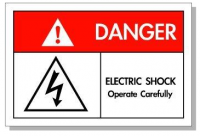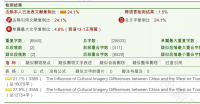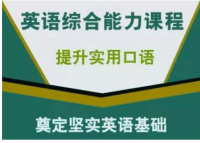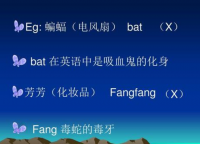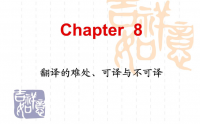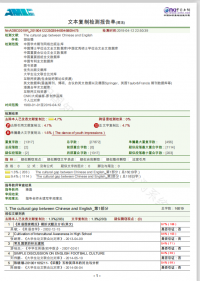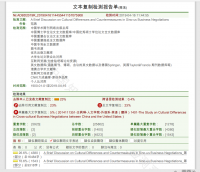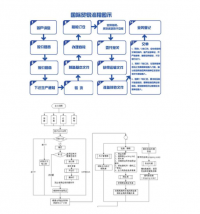高职商务英语专业写作中的名词偏误分析
摘要:作为应用语言的一个学科,偏误分析是研究第二语言学习者语言的一种有效手段。本研究探讨高职商务英语
专业学习者在作文中的名词错误。本研究以偏误分析、母语负迁移为理论基础,具体探讨一下三个问题:学习者在
英语写作中名词错误的类型、学习者在英语写作中名词错误的特点和造成这些错误可能的原因。通过研究获得了一
些发现:学生对于名词的学习容易在词形和措辞方面出现错误。本研究的发现将会为外语教学提供借鉴。
关键词:名词错误; 中介语; 偏误分析
Analysis of noun errors in business English major higher
vocational colleges
Abstract: As a subject of applied linguistics, error analysis is an effective means to study second language learners’
language. This study aims to explore the noun errors in the compositions of business English majors in higher vocational
colleges. Based on the theoretical basis of error analysis and negative transfer of mother tongue, this study specifically
discusses three questions: the types of noun errors in English writing, the characteristics of learners' noun errors in English
writing and the possible reasons for these mistakes. Through the research we have got some conclusions: students are easy to
make errors in terms of noun meaning, wording and noun form. The findings of this study will provide references for foreign
language teaching.
Key words: Nouns errors; Interlanguage; errors analysis
1. Introduction
1.1 General situation of the study
The paper uses the error analysis theory to analyze the noun errors in English
compositions of business English majors in higher vocational colleges. This study aims to
explore learners' noun errors in English composition in the following three aspects: 1.What
are the types of noun errors in English writing? 2. What are the characters of learners' noun
errors in English writing? 3.What are the causes of these errors? The study finds learners’
common noun errors in second language writings and gives some solutions to the typical
errors. This study is based on 200 essays on "how to deal with stress in college", "how to get
rid of cheating in schools" and "cars and air pollution" written by business English majors in
a vocational college.
1.2 Reason of the study
In the process of second language acquisition, the habit of using the learners’ first
language, namely the mother tongue, will directly affect the acquisition of the second
language, and play a positive role in promoting or negatively interfering with it, which is
called positive transfer and negative transfer of language. Before learners contact a foreign
language, they have already formed a large number of concepts of their mother tongue in
their mind, thus forming certain thinking patterns and language habits. In the process of
acquiring a foreign language, they will naturally use a large amount of knowledge of their
mother tongue to help them understand and use the foreign language. If the mother tongue
and the foreign language have some common features in some basic concepts and common
usages, learners can master the foreign language by using the mother tongue to some extent.
This is positive transfer of mother tongue, which helps learners make practical use of foreign
language to a great extent, especially in the primary stage. However, with the further study,
we will find that there are still many people who have difficulties in understanding and
expression. The reason is that we always use a foreign language according to the Chinese
way of thinking and habits of use, which is also called rigid thinking. In other words, mothertongue produces negative transfer in this communication process. This study will explore the
negative effects of mother tongue on understanding and expression in second language
acquisition, namely negative transfer of mother tongue. Learners often make errors in the
spelling, singular and plural forms, meaning and part of speech of nouns. So we should attach
much important on teaching nouns, and make learners fully understand nouns.
Contents
1.Introduction ............................................................................................................................1
1.1 General situation of the study .......................................................................................1
1.2 Reason of the study.......................................................................................................1
1.3 The aims and significance of the study.........................................................................2
2. Study of corpus ......................................................................................................................2
2.1 General introduction to corpus......................................................................................2
2.2 The significance of corpus............................................................................................3
2.3 Methods for corpus-based studies.................................................................................3
2.4 Analysis data of the study .............................................................................................3
2.4.1 Noun error type distribution ratio .......................................................................4
2.4.2 Summary the frequency of each noun error type in the corpus ..........................4
2.4.3 Analysis the proportion of noun spelling errors types ........................................7
2.4.4 Analysis nouns verbal error types.......................................................................7
2.4.5 Analysis errors in capitalization..........................................................................8
3. Error Analysis and Causes .....................................................................................................8
3.1 General Introduction to Errors Analysis .......................................................................8
3.2 Specific analysis of noun errors in corpus....................................................................9
3.2.1 Errors in Word Form...........................................................................................9
3.2.2 Errors in wording ..............................................................................................10
3.3 The characteristics of learner noun errors in English writings ................................... 11
3.4 Interpretation of Noun Errors...................................................................................... 11
4. Conclusion ...........................................................................................................................12
4.1 Findings of the study...................................................................................................12
4.2 Driving learner’s awareness of nouns.........................................................................13
4.3 Teaching and learning nouns in comparison with Chinese.........................................13
Bibliography...........................................................................................................................14
Bibliography
[1] Badecker, W. Representational properties common to phonological and orthographic output system [J]. Lingua, 1996,
(99):55-83.
[2] 关德英.从符号学角度看翻译中的语言视差 [J].宿州教育学院报, 2006.
[3] 贾莉丽.中国英语学习者词性误用的语料库调查[D].上海师范大学硕士学位论文, 2005.
[4] 罗子倩.中国英语学习者写作中词缀构词失误分析[D]. 华中科技大学学位论文, 2007.
[5] 吴振玲.真实语料在初中英语写作教学中的应用研究 [D].广西师范大学硕士学位论文, 2017



